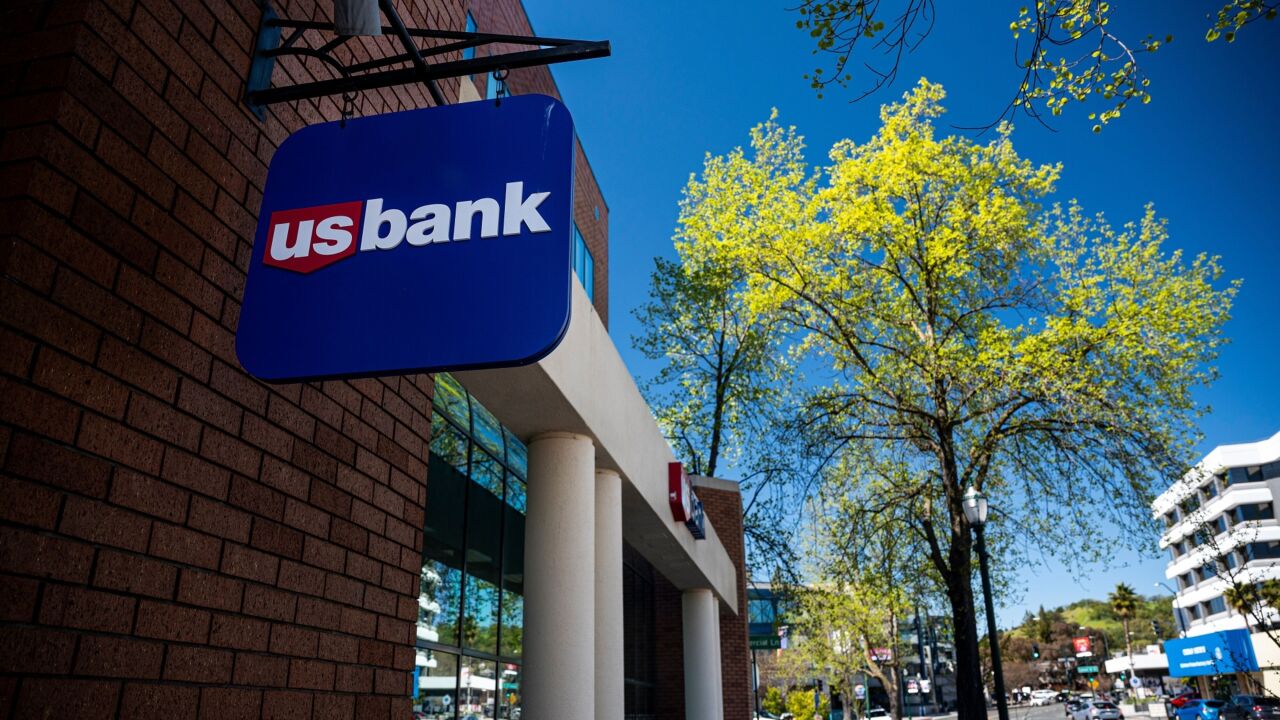
"The big message is diversification," Eagle
The $11.3 billion-asset Eagle recorded a $35.2 million provision for credit losses in the first quarter on an office property in Washington, D.C., whose value was reappraised at about half of its value. The bank reported a net loss of $338,000 for the first quarter. It posted another loss for the second quarter, $83.8 million, driven by a $104.2 million goodwill impairment.
Commercial real estate makes up more than 60% of the bank's loans. Urban office CRE is under pressure across the industry as landlords struggle with higher vacancy rates amid enduring remote work trends. This is the case in Washington — the heart of Eagle's footprint — where the government and businesses that work with federal agencies have scaled back their collective office square footage.
Eagle's non-performing assets increased $6.7 million in the second quarter, reaching 0.88% of total assets. That was up from 0.79% the prior quarter and was largely due to increases from construction and CRE loans, the bank said.
The industry overall reported NPAs as a proportion of total assets of 0.52%, according to S&P Global Market Intelligence.
Keefe, Bruyette & Woods analyst Catherine Mealor said in a report that she is "cautious" that looming loan maturities "could drive credit events and the need for additional appraisals" that could eat into Eagle's profits.
At the same time, with interest rates elevated following Federal Reserve hikes over the past two years to tame inflation, Eagle also is wrestling with modest loan demand and elevated deposit costs. The bank's second-quarter loans were flat from the prior quarter at $8 billion. Its deposits of $8.3 billion were down 3%, while its interest-bearing liabilities increased 8 basis points in the second quarter. Its net interest margin narrowed by 3 basis points to 2.40%.
Eagle's shares were down 30% year-to-date through the first week of September.

For all the headwinds, Reil said Eagle has effectively cleared the decks for a stronger second half of 2024 and growth next year. Following retirements and attrition, the bank in August hired a new chief risk officer, a new chief credit officer and a new chief commercial-and-industrial lending officer.
While still committed to CRE, the bank intends to steadily decrease its concentration in that segment largely by ramping up C&I lending, Reil said. She said there is pent-up demand throughout the D.C. metropolitan area that could get unleashed once the Fed starts cutting interest rates. With inflation now below 3%, down from a peak above 9% in 2022, central bank Chair Jerome Powell said in August that
Citing Powell's "dovish remarks" at a symposium in Wyoming, BNP Paribas economist Yelena Shulyatyeva now expects a 25-basis-point cut each in September, November and December. A 50-basis-point reduction is a possibility this month, she said in an email.
The futures market also expects at least a 25-basis-point cut when policymakers announce their decision on Sept. 18., followed by several more from late 2024 into next year.
"We are prepared now to hit the ground running," said Riel, who helped found Eagle in 1998. "I do think
When
The first half of 2024 proved "a tough lending market. But things are not as bad as what some people are predicting them to be," Reil said, referring to long-simmering recession forecasts.
Gross domestic product, the broadest measure of the U.S. economy, increased at an annual rate of 3% in the second quarter, according to an updated estimate from the Bureau of Economic Analysis. That was up from 1.4% in the first quarter.
The Atlanta Fed projected 2% growth for the third quarter. The intention of expected Fed rate cuts would be to lower borrowing costs, stimulate loan demand and spending, and drive economic activity.
Eagle Chief Financial Officer Eric Newell said that, despite recent credit quality challenges, the bank already sees "material improvement in its core operating performance" and is both well-capitalized and sufficiently reserved for any lingering loan weakness.
He emphasized that Eagle is not only poised for lending diversity, but its CRE portfolio overall is in sound shape. The book is spread across various sectors and markets, including the D.C. suburbs, and the bank does not see systemic issues.
Recent setbacks aside, he told American Banker, "






